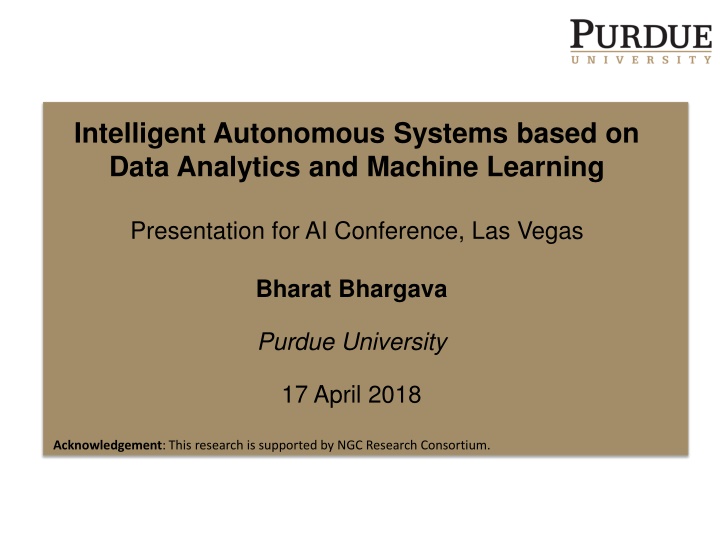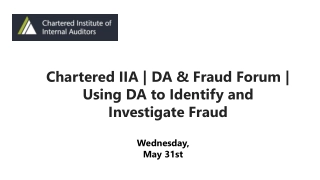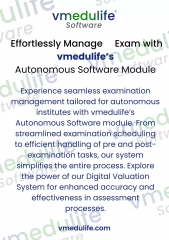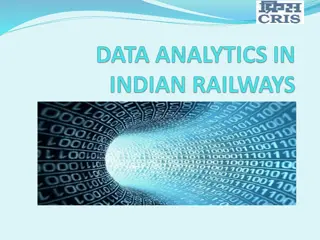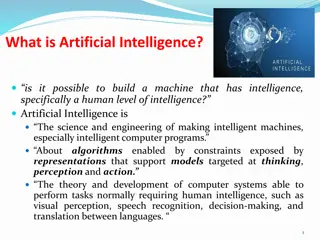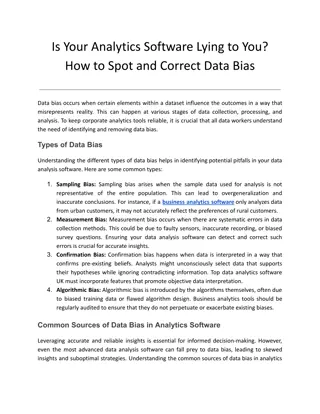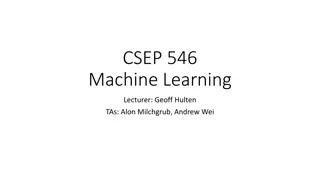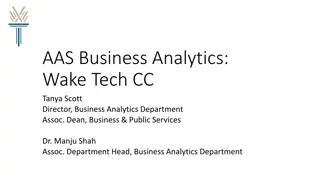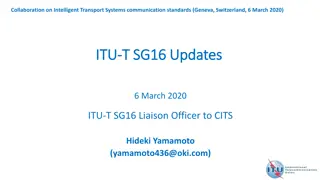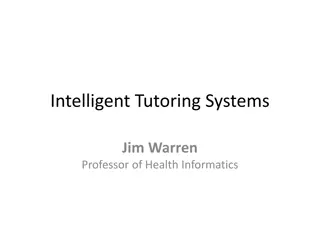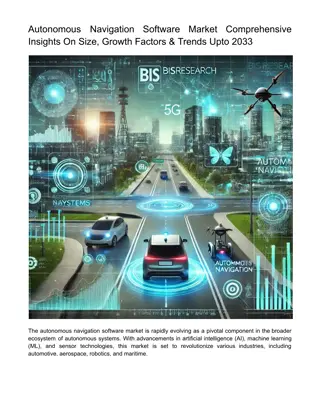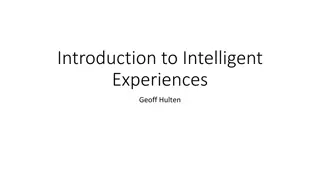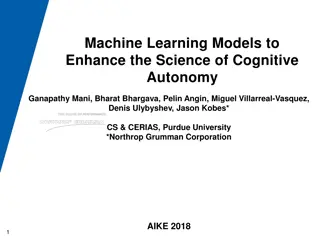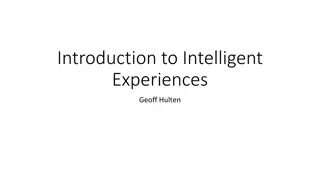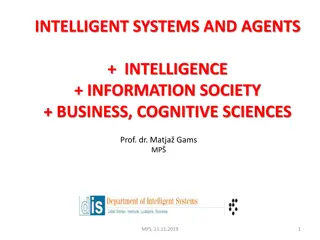Intelligent Autonomous Systems based on Data Analytics and Machine Learning
Presentation on Intelligent Autonomous Systems, emphasizing the importance of cognitive abilities, effectiveness in knowledge discovery, and reflexive behavior. The research is supported by the NGC Research Consortium to enhance autonomy in smart cyber systems through machine learning and data analytics collaborations.
Download Presentation

Please find below an Image/Link to download the presentation.
The content on the website is provided AS IS for your information and personal use only. It may not be sold, licensed, or shared on other websites without obtaining consent from the author.If you encounter any issues during the download, it is possible that the publisher has removed the file from their server.
You are allowed to download the files provided on this website for personal or commercial use, subject to the condition that they are used lawfully. All files are the property of their respective owners.
The content on the website is provided AS IS for your information and personal use only. It may not be sold, licensed, or shared on other websites without obtaining consent from the author.
E N D
Presentation Transcript
Intelligent Autonomous Systems based on Data Analytics and Machine Learning Presentation for AI Conference, Las Vegas Bharat Bhargava Purdue University 17 April 2018 Acknowledgement: This research is supported by NGC Research Consortium.
Intelligent Autonomous Systems According to Wes Bush, CEO of NGC, Autonomous Systems1 should be Able to perform complex tasks without or with limited ongoing connection to humans. Cognitive enough to act without a human s judgment lapses or execution inadequacies. Intelligent Autonomous Systems (IAS) are characterized as highly Cognitive,effective in Knowledge Discovery, Reflexive, and Trusted, 1Wes Bush, Sept. 6, 2016. The Exciting Future of Autonomous Systems at KSU 2
Motivation from NGC A Holistic Approach Autonomous systems should not only learn at the network level but they should learn about their environment. Autonomous systems should be able to be trained with Meta-data, limited data, incomplete data, and unknown (new) data Dynamic and unpredictable environment We discussed these ideas with Jason Kobes and Paul Conoval. 3
Collaboration with NGC IRADs IAS implementations contribute to the following IRADs with machine learning and data analytics to enhance autonomy in smart cyber systems. Adaptive Real-Time Detection and Examination Network IRAD Automated Mission Planning for Autonomous Systems IRAD Distributed Data Processing IRAD Enterprise Information Management System and Analytics IRAD Information Analytics IRAD Rapid Autonomy Prototype Implementation & Demonstration IRAD Reliability Analysis Data System IRAD Smart Autonomy IRAD Cyber Resilient DevOps IRAD 4
Comprehensive IAS Architecture Adaptive action Anomaly Detection 5
Implementation of Components of IAS Cognitive Autonomy & Knowledge Discovery: Monitors and records system s activities (Data provenance and sequence of system calls) Conducts privacy-preserving aggregated analytics on provenance data. Utilizes Deep learning based anomaly detection by analyzing sequence of system calls. Reflexivity: Adaptive actions are performed through graceful degradations without disrupting the ongoing critical processes by incremental learning. Trust: Uses blockchain for storing provenance data for trust. 6
Demo Description There are three components that are demonstrated. Demo 1 (Cognitive Autonomy/Knowledge Discovery): System is monitored and its interactions with client services are recorded as provenance data. Privacy-preserving aggregated data analytics are performed on the provenance data. Sensitive data is perturbed with random noise and the noise is removed at the end to obtain aggregated result, protecting the privacy of individual entities. A Deep Learning based anomaly detection is implemented to protect against code-hijacking attacks. 7
Demo Description Demo 2 (Reflexivity): Under anomalous operating contexts or attacks, the replicas in the replacement scheme based on Combinatorial balanced designs take over the processing from primary module. Replicas are updated with system states periodically (Update interval is determined through Bayesian inference of system s operating context). Unused replicas are used for other processes simultaneously, which makes the system faster and fault-tolerant. 8
Demo Description Demo 3 (Trust): A scheme that guarantees the integrity of provenance data is implemented. Capacity to verify every transaction in IAS. 9
Implementation and Deliverables Reflexivity prototype for combinatorial replica scheme: Source code: Node.js implementation, Bayesian model, simulation software developed for combinatorial design, and Data used for simulation. Link: https://goo.gl/M4rXCN The prototype is built with FAYE framework (https://faye.jcoglan.com/node.html) with Node.js. Replica updates are done through a combinatorial design simulator (https://goo.gl/pgVHdk). Deep Learning based anomaly detection prototype: In progress. Blockhub prototype for secure blockchain-based data distribution: Source code: https://github.com/Denis-Ulybysh/Waxedprune2018 codebase is taken from open-source Marbles project https://github.com/IBM-Blockchain/marbles/tree/v4.0 Documentation: Demo video and User manual for running the prototype. 11
Publications https://www.cs.purdue.edu/homes/bb/#research https://www.cs.purdue.edu/homes/bb/#colloquia 1. M. Villarreal-Vasquez, B. Bhargava, P. Angin, N. Ahmed, D. Goodwin, K. Brin and J. Kobes. An MTD-based Self- Adaptive Resilience Approach for Cloud Systems. IEEE CLOUD 2017. 2. M. Villarreal-Vasquez, B. Bhargava and P. Angin. Adaptable Safety and Security in V2X Systems. IEEE ICIOT 2017. 3. Ulybyshev, B. Bhargava, M. Villarreal-Vasquez, D. Steiner, L. Li, J. Kobes, H. Halpin, R. Ranchal, A. Alsalem "Privacy - Preserving Data Dissemination in Untrusted Cloud", IEEE CLOUD, 2017 4. G. Mani, B. Bhargava, B. Shivakumar, J. Kobes "Incremental Learning Through Graceful Degradations in Autonomous Systems", IEEE ICCC, June 2018 (In Submission). 5. G. Mani, B. Bhargava, P. Angin, M. Villarreal-Vasquez, D. Ulybyshev, J. Kobes "Machine Learning Models to Enhance the Science of Cognitive Autonomy", IEEE ICCC, June 2018 (In Submission) 6. G. Mani, B. Bhargava Scalable Learning Through Error-correcting Codes based Clustering in Autonomous Systems", IEEE ICCC, June 2018 (In Submission) 7. G. Mani, D. Ulybyshev, B. Bhargava, J. Kobes, P. Goyal"Autonomous Aggregate Data Analytics in Untrusted Cloud", IEEE ICCC, June 2018 (In Submission). 8. G. Mani, B. Bhargava. "Graceful Degradation in Autonomous Systems Based on Combinatorial Learning Model". (In Submission). 9. D. Ulybyshev, M. Villarreal-Vasquez, B. Bhargava, G. Mani, S. Seaberg, P. Conoval, D. Steiner, J. Kobes "Blockhub: Blockchain-based Software Development System for Untrusted Environments", IEEE CLOUD 2018, (In Submission). 10. D. Ulybyshev, B. Bhargava, A. Alsalem "Secure Data Exchange and Data Leakage Detection in Untrusted Cloud", ICACCT 2018 (Accepted, in-press). 12
Reflexivity A Solution Based on Graceful Degradation 13
Comprehensive Architecture of IAS Reflexivity Adaptive action Anomaly Detection 14
Solved Problem Given a smart cyber system operating in a distributed computing environment, it should be able to: 1. Replace anomalous/underperforming modules 2. Swiftly adapt to changes in context 3. Achieve continuous availability even under attacks and failures4. 4Thomas E. Vice, Corporate VP of NGC. Sep. 06, 2016. "Future of Advanced Trusted Cognitive Autonomous Systems, at Purdue University 16
Graceful Degradations: Combinatorial Replica Replacement Scheme Replica replacement by Combinatorial Balanced-blocks: N systems (S1 S7) are split into M subset blocks (DAB1 DAB7) of size R (3 : S1, S5, S7). Each system appears in C blocks (3 out of M). Each system pair appears in blocks (only 1). We implemented (N, M, R, C, ) = (7, 7, 3, 3, 1). Example on next slide. Each distributed block contains a subset of systems and their replicas that are mathematically distributed and connected, providing balanced resource usage. The replicas periodically receive updates from their primary modules. Update interval is set based on Bayesian inference. Replicas can be used to perform other tasks in parallel while primary module is functioning properly. 17
(7, 7, 3, 3, 1)-configuration DAB: Distributed Autonomous Block 18
Measurements for Various Process Completions Speed Up Due to Combinatorial Replica Scheme (Compared to regular sequential design) Process Type Process Name P1 FIBSEARCH 1.3 P2 DOUBLE MULT 1.4 P3 FIBB 1.5 P4 SEARCH 1.8 P5 COPY 1.8 P6 SCALAR 2 P7 SUM 2.1 P8 PRINT 3 P9 MOVEMENT 3.1 19
Measurements for Various Process Completions 2500 Number of state migrations Combinatorial Design Sequential Design 2000 1500 1000 500 0 P1 P2 P3 P4 P5 P6 P7 P8 P9 Process Types 20
Cognitive Autonomy / Knowledge Discovery A Deep Learning Based Anomaly Detection Solution 21
Comprehensive Architecture of IAS Cognitive Autonomy and Knowledge Discovery Adaptive action Anomaly Detection 22
Problem Statement Programs store Return Addresses (control flow) along with data in the stack. Control-hijacking attacks execute arbitrary code on the target IAS program by hijacking its control flow. A Deep Learning (DL) based anomaly detection technique has been developed to protect IAS programs against these attacks Stack Frame Return Address Local Variables Parameters EBP 23
Problem Statement Programs store Return Addresses (control flow) along with data in the stack. Control-hijacking attacks execute arbitrary code on the target IAS program by hijacking its control flow. A Deep Learning (DL) based anomaly detection technique has been developed to protect IAS programs against these attacks Data overrides Return Address Stack Frame Return Address Local Variables Parameters EBP 23
Research Approach An event ei is defined defined as a function call (system or library call)in the execution trace of a program. Use Deep Learning to answer the binary classification problem of given a sequence of function calls (or system events) e1e2e3 ekwhether or not the sequence should occur? 24
Research Approach An event ei is defined defined as a function call (system or library call)in the execution trace of a program. Use Deep Learning to answer the binary classification problem of given a sequence of function calls (or system events) e1e2e3 ekwhether or not the sequence should occur? System Events Given this sequence at time t-1 24
Research Approach An event ei is defined defined as a function call (system or library call)in the execution trace of a program. Use Deep Learning to answer the binary classification problem of given a sequence of function calls (or system events) e1e2e3 ekwhether or not the sequence should occur? System Events Given this sequence at time t-1 At time t, should this sequence occur? 24
Types of attacks and mitigation Attacks: Code injection: Malicious instruction sequences are executed using injected codes in the data portion of the stack. Examples: buffer overflow and buffer specified injection Code reuse: Malicious instruction sequences are executed without injecting external code. Examples: Return-oriented programming and memory disclosure. Mitigation: Control Flow Integrity (CFI) is required. Deep Learning is used to guarantee Control Flow Integrity (CFI) as the model detects non-conforming sequences of execution traces in run time. 25
Deep Learning Based Anomaly Detection For a given program, a code coverage is conducted to obtain all the possible execution traces. An event ei is defined defined as a function call (system or library call)in the execution trace of a program. Each possible system event (function calls) is uniquely identified as they will form the vocabulary of system events. The Deep Learning model (neural network) is trained with the obtained sequences of events. The model is based on Recurrent Neural Networks: Long-Short Term Memory (LSTM) and Gated Recurrent Units (GRU.) 26
Deep Learning Based Anomaly Detection After training, given a sequence of events as input, the neural network produces as output an array of probabilities, one for each of the possible events in the system. At any time t each possible event (system call or library call) in the system is assigned a probability estimated with respect to the sequences of events observed until time t-1. At classification time t, the decision is made with respect to a pre-defined threshold of the top-k most likely events. 27
Deep Learning Based Anomaly Detection Set of all system events Neural Network 28
Deep Learning Based Anomaly Detection Sequence of system events at time t-1 Set of all system events Neural Network 28
Deep Learning Based Anomaly Detection Sequence of system events at time t-1 Set of all system events New event at time t Neural Network 28
Deep Learning Based Anomaly Detection Sequence of system events at time t-1 Set of all system events New event at time t Neural Network Input 28
Deep Learning Based Anomaly Detection Sequence of system events at time t-1 Set of all system events New event at time t Neural Network Input Outpu t [p1, p2, p3, p4, p5, p6, p7] Probabilities of possible events 28
Deep Learning Based Anomaly Detection Sequence of system events at time t-1 Set of all system events New event at time t Neural Network Input Outpu t [p1, p2, p3, p4, p5, p6, p7] Probabilities of possible events At time t, the new event is classified as normal if its probability is in the top-k probabilities; anomalous otherwise 28
Trust A Solution Based on Blockchain 30
Comprehensive Architecture of IAS Trust Adaptive action Anomaly Detection 31
Problem Statement Provide trust (integrity, confidentiality, verifiability) to provenance data in IAS Interactions between services are logged Log records can not be corrupted Provide trust for network participants in IAS Ensure data confidentiality Ensure data integrity Provide privacy-preserving data exchange in IAS 32
Blockchain Technology Deployment Fine-grained role-based and attribute-based access control with data leakage detection capabilities is provided by integration with WAXEDPRUNE Performance improvements: Depth-robust graphs (in collaboration with Prof. Blocki, Purdue) to store blockchain for faster transaction verification: no need to verify all the links in the chain 33
Future Work Failure Recovery (proposed by Steve Seaberg, NGC) Need environment with intermittent connectivity to maintain consistency in mobile Need quantification of performance parameters after a varying period of connectivity breakdown Need to determine how much bandwidth and resources are needed to make network nodes consistent (or current) 35
Thank you!!! 36
